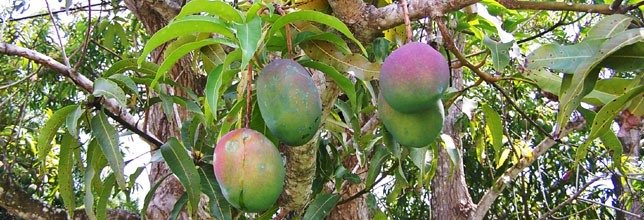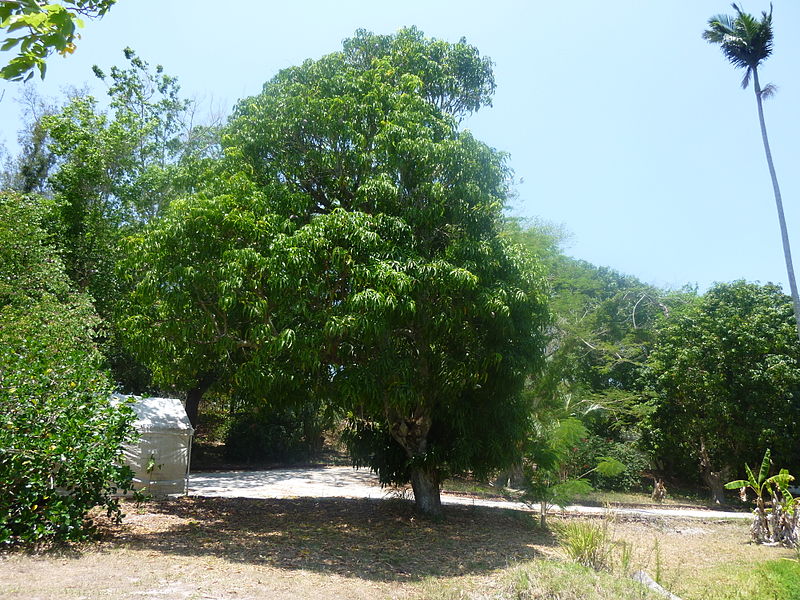
Where in the World is the Mango?
The mango tree is believed to have originated in Eastern India. (Another plant native to this area is the Pomegranate Tree!) In the 4th and 5th centuries BC, Buddhist monks are thought to have carried the mango plant to Eastern Asia. In the 10th century AD, Persians transported the mango to East Africa. Slowly, West Africa, Brazil, and Central America began to cultivate this fruit. Today, mangos are grown throughout the tropical regions of the world such as the Caribbean, Southern Asia, and Africa. They can be found primarily between 25°N and 25°S. On the map below, the area between the two red lines indicates the locations where mangos are most likely to grow.
Mango trees grow best in lowland tropical forests but can grow in altitudes up to 1200 meters. The Mangifera indica tree also thrives where a rainy season and a dry season are clearly present. Specifically, these plants prefer a rainy season of approximately four months (June-September) producing 30-100 inches (75-200 cm) of precipitation. The rainy season is then followed with an eight month dry season. The mango tree grows best in dry, sandy soil with a pH of 5.5-7.5. Direct sun is preferred for tree growth and fruit production. Below are images of a mango tree in natural habitats.
Continue to learn about the adaptations of the mango tree or go back to the home page!


